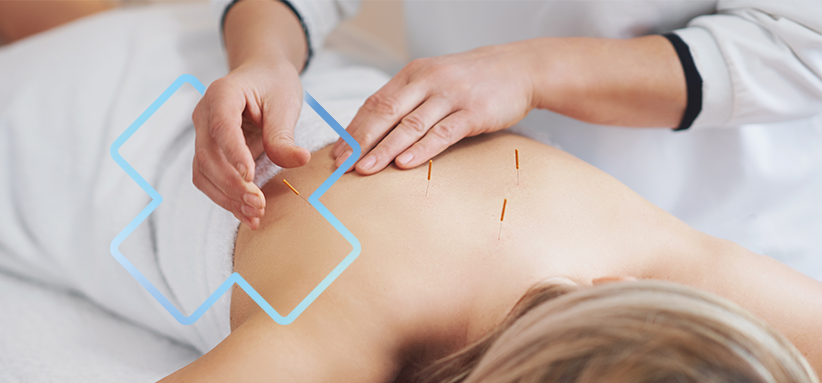Acupuncture is suitable for people of all ages looking to treat or prevent various health conditions. Using therapeutic tools such as needles and suction cups, the acupuncturist works to reduce pain, stress, muscle tension and inflammation, among other things, in order to promote your overall well-being.

Why consult an acupuncturist?
Acupuncture can help relieve many health problems. Its effectiveness has been demonstrated to treat conditions like allergies, headaches and migraines, chronic lower back pain and postoperative pain, etc. You can consult an acupuncturist to reduce pain of musculoskeletal origin (which affects the muscles, bones or joints), strengthen your immune system, improve your energy level, reduce stress and insomnia, or reduce digestive disorders among others.
 Make an
Make an
appointment with an acupuncturist
The acupuncturist can be consulted for prevention as well as to treat a recent or long-standing condition. He can also accompany women during pregnancy and after childbirth.
YOU
KNOW?The professional practice of acupuncture has been governed by the Ordre des acupuncteurs du Québec (OAQ) since 1995. Only its members can use the title of acupuncturist in Quebec.
What are the benefits of acupuncture?
Acupuncture is a comprehensive approach that aims to restore the proper flow of energy throughout the body. Treatments can help you reduce pain, stress, inflammation, tension and muscle spasms, in addition to acting on many systems: nervous, respiratory, circulatory, immune, hormonal, digestive, etc. Acupuncture notably helps local blood circulation and has a relaxing effect that promotes overall well-being.
What treatments are used in acupuncture?
Acupuncture promotes an energetic approach. Different techniques can be used such as needles, cupping, moxibustion, electrostimulation, gua sha and auriculotherapy.
- The needles used in acupuncture are very thin and are positioned in such a way that you hardly feel them. The sensation varies from person to person and region of the body, but generally you can expect to feel a slight pinch for a few seconds. All needles are sterile and single use. It is the most used treatment method in acupuncture.
- Suction cups create suction on the skin by drawing out the air inside each cup. They can be left in place or glided over the skin.
- Moxibustion consists of heating acupuncture points using small sticks or cones made from a plant called mugwort. Its therapeutic effects can treat muscle and joint pain as well as digestive and gynecological disorders. Treatment should take place in a room with adequate ventilation.
- Electrostimulation consists of stimulating the acupuncture points using small electric shocks in order to accelerate the healing process of an area in pain. It is a technique similar to TENS in physiotherapy.
- Gua sha is a technique used to remove blockages by vigorously rubbing the skin using a tool made from jade. This practice, often less known to the public, is very effective both for muscle tension and for organ dysfunction, such as certain circulatory disorders for example.
- Auriculotherapy is an acupuncture technique that stimulates specific points in the ear. This practice is often used in the treatment of addictions, post-traumatic shock, insomnia, pain and anxiety.
How is an acupuncture session performed?
At the beginning of the meeting, your acupuncturist will ask you questions about your medical history, your symptoms and your goals. Depending on this assessment, he will stimulate certain acupuncture points using needles or another technique described above.
Then, depending on your condition, he will let you rest for 15 to 45 minutes in a quiet environment, usually with dim lights and a comfortable blanket. At the end of the treatment, the acupuncturist will remove the needles or other therapeutic tools used and will give you advice to integrate into your daily life.
Did you know that acupuncture is reimbursed by the
CNESST and the SAAQ?
Acupuncture after a workplace accident (CNESST)
Acupuncturists have extensive expertise in treating pain and disability associated with work injuries. They often team up with physiotherapists and occupational therapists to help you achieve full and lasting recovery.
Acupuncture after a motor vehicle accident (SAAQ)
Acupuncturists can treat you for pain and disability that occurs after a traffic accident. They regularly work as a team with physiotherapists and occupational therapists to support you towards a complete and lasting recovery.


